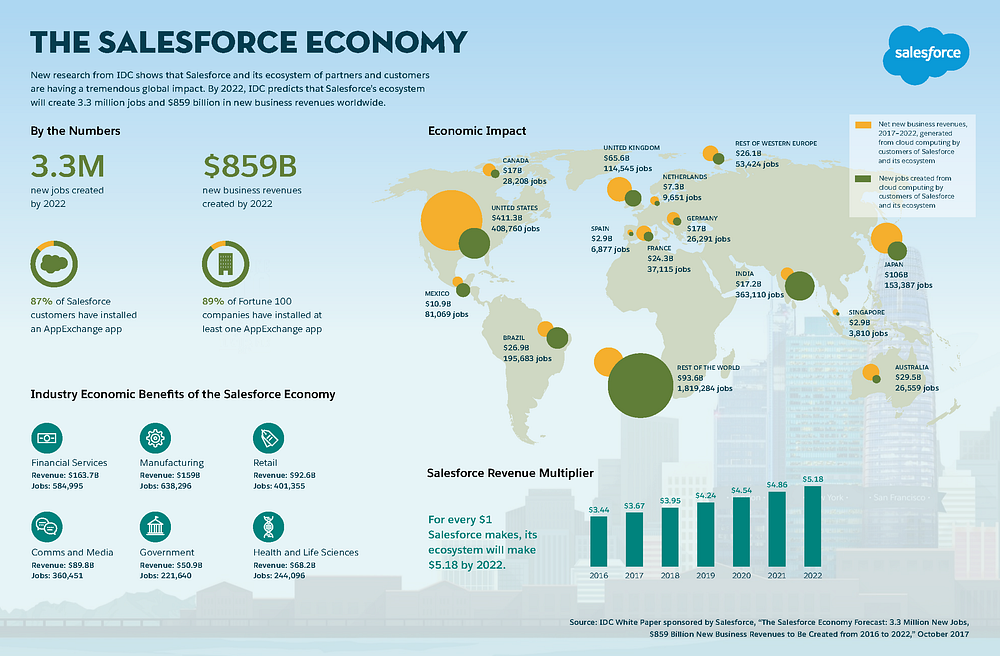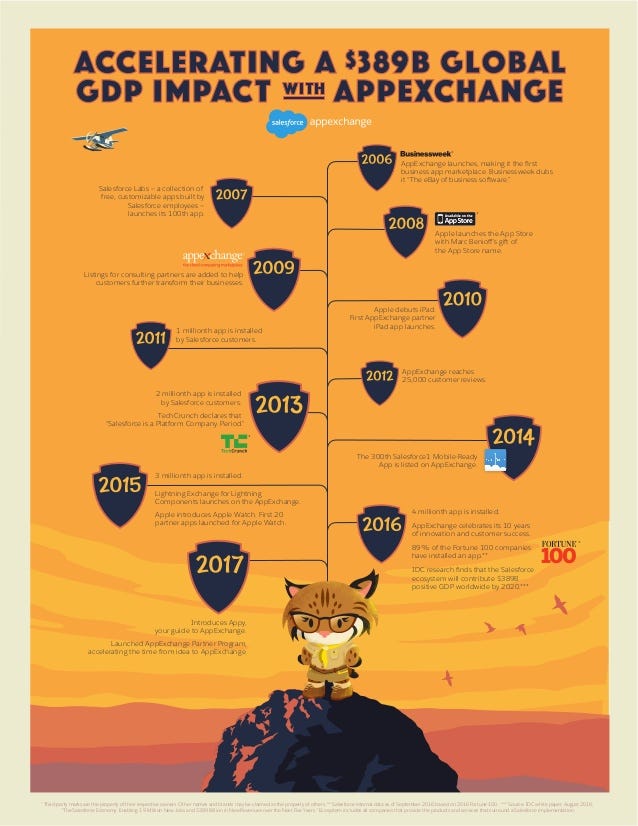
Get your FREE 30-day trial.
Please complete all fields.
It was 11 years ago when Salesforce briefed me at Gartner about this new idea called Salesforce AppExchange. It was a concept that would enable customers, implementation partners and ISV providers to share and/or monetize applications in the cloud. The value proposition was simple: build, innovate and distribute apps quickly on a trusted, secure platform to lots of potential users. The lightning speed of cloud-based application development enabled a fast path to monetization and business value for all involved.
Salesforce AppExchange is the fuel for the Salesforce Ecosystem economic engine. According to a recent IDC report, the Salesforce Economy will drive the growth of $859 billion in new business revenues to local economies (see Figure 1). Worldwide, Salesforce and its ecosystem are expected to enable the creation of 3.3 million jobs within the Salesforce customer base from the use of cloud computing between the end of 2016 and the end of 2022.

Figure 1. Source
Looking at Salesforce AppExchange (see Figure 2) and the Salesforce Platform, it seems like the obvious IT-centric model to drive economic growth. However, it was not always so obvious. Early in its history, no one believed Salesforce could run a business application in the cloud, much less facilitate an entire ecosystem. At the same time, I heard from all the major players in the business application market about their ecosystems. The flaw in those ecosystems (even today) was that they were focused on lessening the pain of deploying on-premise software — not on creating economic business value for all the participants. As history has now shown, Salesforce proved the early doubters wrong (including one former skeptic who is authoring this blog).

Figure 2 — History of Salesforce AppExchange
Partners will always be the lifeblood of the ever-expanding Salesforce ecosystem and IDC’s recent data shows why Salesforce AppExchange and the Salesforce Platform have become the vehicles for partner success. According to IDC’s poll of 75 partners in 2016, those partners reported a 48% increase in revenues year-on-year. Ecosystem revenues as a whole are expected to more than triple from 2016 to 2022.
The IDC report cited partners seeing specific benefits from working with Salesforce, such as:
Salesforce’s core value is derived from the Hawaiian term “Ohana” — meaning Family. Ohana is a spirit of collectiveness with customers and all stakeholders to move the industry and world forward for the betterment of all. For Partners to win, the customers they sell to must also win. Ultimately, the benefit of the Salesforce Ecosystem is making customers successful. Customers want their applications to work, and partner’s applications to integrate seamlessly at all levels. Which is why, if you’re an ISV, joining the Salesforce Ohana ecosystem is the shortest and most sustainable path to business success.